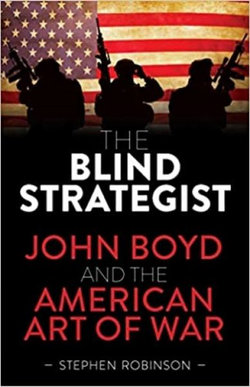From the author of Panzer Commander Hermann Balck and False Flags comes The Blind Strategist: John Boyd and the American Art of War.
Colonel John Boyd (1927-1997), a maverick fighter pilot, revolutionized the American art of war through his ideas on conflict and the human mind. Boyd claimed that victory is won by the side that most quickly transitions through 'decision cycles'. From this revelation came maneuver warfare theory, a new warfighting creed that gained influential converts in the Pentagon who were seeking a new way of waging war.
In this in-depth account, acclaimed historian Stephen Robinson critically evaluates the maneuver warfare revolution that transformed the American military. He discusses the impact of Colonel Boyd's ideas and the indoctrination of maneuver warfare concepts. Maneuver warfare has since been credited with many military victories, but such claims have little basis in reality and Boyd's legacy has accidently undermined American security. Robinson exposes the fraudulent accounts behind Boyd's research and the controversy surrounding them.
The Blind Strategist separates fact from fantasy and exposes the myths of maneuver warfare through a detailed evidence-based investigation. Discover how maneuver warfare has corrupted the art of war and resulted in catastrophic decisions in this must-read for anybody interested in American military history.



Share This Book: